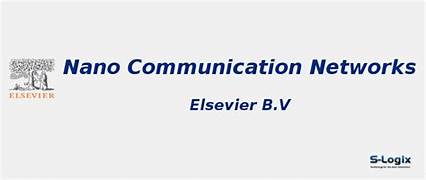Nano-Scale Communication: Challenges in Network Design
The concept of nano-scale communication represents one of the most fascinating frontiers of modern technology. It involves the transmission of information among devices or systems operating at the nanometer scale—ranging from molecular to atomic levels. These devices are not just a distant dream; they are emerging technologies with the potential to revolutionize industries from healthcare to environmental monitoring and beyond. However, designing efficient networks for these nano-scale systems introduces numerous challenges, including limitations in power, bandwidth, scalability, and security. This article explores these challenges and discusses potential solutions to ensure the viability of nano-scale communication systems.
What Is Nano-Scale Communication?
Nano-scale communication refers to communication among devices that are often smaller than the wavelength of visible light, typically operating in the realm of nanometers (one billionth of a meter). These devices, such as nanosensors, nano-actuators, and molecular machines, are designed to perform specific tasks like detecting pollutants, monitoring biological environments, or enhancing precision in drug delivery. Nano-scale communication involves methods like molecular communication, which uses the exchange of molecules or ions to transmit data, or electromagnetic communication at extremely high frequencies.
While these systems offer unprecedented opportunities, they come with unique challenges that make traditional communication techniques unsuitable. The ability to create reliable and efficient networks at the nano scale is crucial for unlocking the full potential of these devices.
Key Challenges in Nano-Scale Communication
- Power Constraints
One of the biggest challenges in nano-scale communication is the limitation in power resources. Nano-devices, due to their small size, have limited energy storage capabilities, which restrict their operational lifetime. Additionally, the power requirements for communication—whether using electromagnetic signals or molecular-based methods—are typically higher than what these devices can provide.
At the molecular level, energy can be used for data transmission in the form of chemical reactions, but the energy consumed for each communication session is minimal. This presents a challenge when scaling up the number of devices or when devices need to communicate over longer distances. Traditional wireless communication relies on electromagnetic waves, which require more power and range than what nano-scale systems can offer.
Potential solutions to these challenges include the development of ultra-low-power circuits and energy harvesting techniques, such as harvesting energy from the environment (e.g., vibrations, heat, or light). Additionally, designing systems with low power consumption that optimize energy efficiency in communication protocols is key to overcoming this limitation.
- Signal Interference and Noise
In nano-scale communication, the size of the devices and the medium they operate in create unique challenges related to signal interference and noise. At the molecular level, the communication medium (such as fluids in biological environments or gases in industrial environments) can significantly alter the transmission of signals. The interaction between molecules, their diffusion rates, and the stochastic nature of these interactions often introduce noise into the system, which can degrade the quality of communication.
In electromagnetic-based communication, interference from nearby objects or other devices can distort the signal, making it difficult to maintain clear communication. At these scales, the physical properties of materials—such as conductance, capacitance, and permittivity—affect signal propagation, further complicating the design of reliable communication systems.
To mitigate these issues, advanced signal processing techniques, noise filtering algorithms, and error-correcting codes may be employed to enhance the quality of communication. Additionally, new materials and fabrication techniques that reduce signal degradation and interference could help improve the performance of nano-scale communication systems.
- Scalability and Network Topology
As with any communication system, scalability is a crucial consideration. In nano-scale communication, where thousands or even millions of devices may be deployed within a small area, the communication network needs to handle large numbers of nodes efficiently. Traditional communication systems rely on hierarchical or mesh network topologies that may not be feasible at the nanoscale due to the physical limitations of the devices.
The small size and energy constraints of nano-devices make them difficult to organize into large-scale networks. The network topology needs to support efficient communication without excessive power consumption or interference. Additionally, the devices themselves may have limited computational and storage capacity, restricting their ability to store routing information or perform complex tasks.
Designing decentralized network architectures that allow nano-devices to operate autonomously while still coordinating with other devices in the network is essential. Techniques like distributed algorithms for routing and data sharing, as well as the use of low-latency communication protocols, will be key to building scalable nano-networks.
- Security and Privacy
Nano-scale communication raises significant security and privacy concerns due to the nature of the devices and the data they handle. Given their potential applications in fields like healthcare, environmental monitoring, and military systems, securing the communication channels becomes paramount. Nano-devices may be vulnerable to physical attacks, where malicious actors could tamper with or capture the data transmitted between devices.
Moreover, in molecular communication, where information is conveyed through the release and reception of specific molecules, ensuring that these molecules cannot be intercepted, cloned, or manipulated by unauthorized parties is a considerable challenge. The size and environment in which these systems operate make it difficult to implement traditional security measures like encryption and authentication.
To address these issues, nano-scale communication systems must incorporate advanced security protocols. One potential solution could be the use of quantum cryptography, which uses the principles of quantum mechanics to secure communication channels. This approach could make it nearly impossible for hackers to intercept or decode messages without being detected. Furthermore, the use of artificial intelligence (AI) and machine learning could help in detecting anomalous behavior and predicting potential security threats, thereby enabling proactive defense mechanisms.
- Data Throughput and Latency
In nano-scale communication, the speed at which data can be transmitted is significantly lower than in traditional communication systems. The limited power, small communication bandwidth, and susceptibility to noise and interference contribute to slower data rates. This is particularly problematic in applications that require real-time or near-real-time communication, such as autonomous medical devices or environmental monitoring systems.
Additionally, latency—the delay between the transmission and reception of data—can have critical consequences in certain applications. For example, in medical devices, even minor delays in data transmission could lead to inaccuracies in diagnosis or treatment.
To improve data throughput and reduce latency, new communication protocols designed for nano-scale systems will need to be developed. These protocols must be optimized for low-power, high-efficiency communication. Techniques like data compression and adaptive modulation, as well as multi-hop communication where data is relayed through intermediary devices, can also help increase the effective throughput of nano-networks.
- Integration with Larger Networks
Finally, integrating nano-scale communication systems with larger, macro-scale networks such as 5G and future 6G networks presents a challenge. These larger networks provide the infrastructure for connectivity, but the nano-devices may not be directly compatible with traditional network technologies. Bridging this gap requires the development of protocols and technologies that can interface nano-scale systems with larger communication networks seamlessly.
For instance, specialized gateways or relays might be needed to connect nano-scale communication systems to the internet or cloud platforms. These systems must be capable of translating the data formats and communication methods between different network layers without introducing significant delays or errors.
Potential Solutions and Advancements
Despite the challenges mentioned, there are promising avenues for addressing the limitations of nano-scale communication:
- Molecular Communication Networks: Research into molecular communication, where information is encoded in the form of molecules, is a burgeoning field. Innovations in this area could offer ultra-low-power solutions for transmitting data over short distances, particularly in biological or chemical environments.
- Hybrid Communication Systems: Combining different communication methods, such as molecular and electromagnetic communication, could help overcome the limitations of individual approaches. Hybrid systems can leverage the strengths of each method to create more efficient, robust networks.
- Nanomaterials and Fabrication: Advancements in nanomaterials and nanofabrication techniques can help create more efficient nano-devices with better power efficiency, reduced interference, and enhanced communication capabilities.
- AI-Driven Network Design: AI and machine learning can play a pivotal role in designing adaptive and intelligent communication systems at the nano scale. These technologies can optimize network performance by predicting traffic patterns, adjusting transmission parameters, and improving security protocols.
Conclusion
Nano-scale communication represents a new frontier in the world of connectivity, with immense potential to change how we monitor, interact with, and control the world around us. However, the design of networks that can support nano-devices at scale is fraught with challenges—power limitations, signal interference, network scalability, security, and latency.
Addressing these challenges requires multidisciplinary innovation, combining fields such as materials science, quantum mechanics, machine learning, and network engineering. As researchers continue to explore new solutions, nano-scale communication could one day become a key enabler of technologies that we can only imagine today, from precision medicine to environmental sustainability.


